|
|
|
|
Products mentioned in this Article
|
|
|
|
|
|
|
|
|
 |
|
|
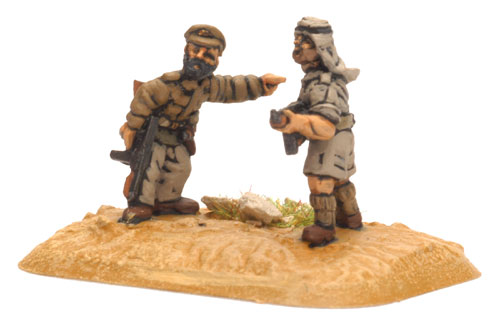 |
SAS Patrol (x2) (BR757) and SAS/LRDG Jeep (x2) (BR412)
Captain David Stirling first thought of creating a desert raiding force to weaken Axis supply lines and disrupt aircraft operations while recovering in hospital from a parachute training accident.
Stirling had served with Colonel Robert Laycock’s ’Layforce’ commando brigade and had gained experience of working behind enemy lines. Unfortunately three disastrous operations with heavy losses caused their disbandment June 1941.
|
Convinced of the merit of his idea, Stirling bluffed his way in to see Major General Neil Ritchie (Deputy Commander-in-chief North Africa & Middle East).
Stirling wanted to raise a new group from the remains of Layforce, but organised into smaller units. They would drop by parachute near enemy airfields, plant time-fused explosives, then rendezvous by foot with LRDG (Long-Range Desert Group) patrols who would return them to base. It was a bold plan, bold enough to convince Ritchie and his Commander in Chief that it may just work.
|
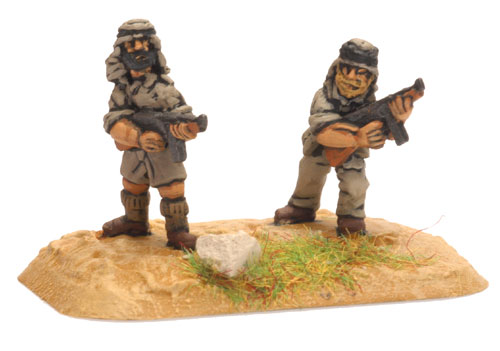
|
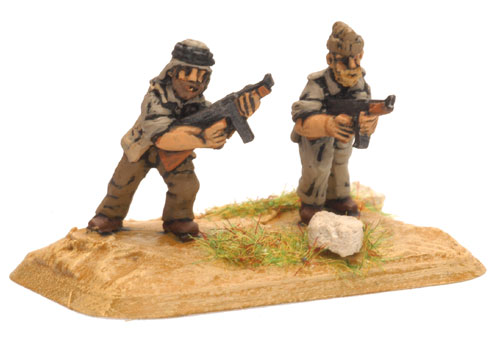 |
By July 1941 Stirling gained permission to form his new raiding force.
It was christened Special Air Service Brigade; a non-existent organization intended to mislead German intelligence. His initial ideas proved difficult to implement without severe loses of men. During one raid only two men made it back!
|
Casting his mind back to past experiences with Layforce for inspiration Stirling remembered an occasion when Layforce had successfully raided a airfield while closely supported by LRDG trucks armed with multiple machine-guns.
|
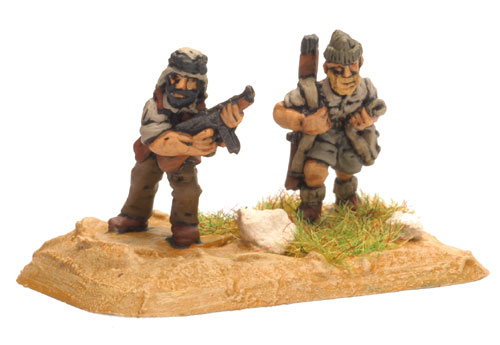
|
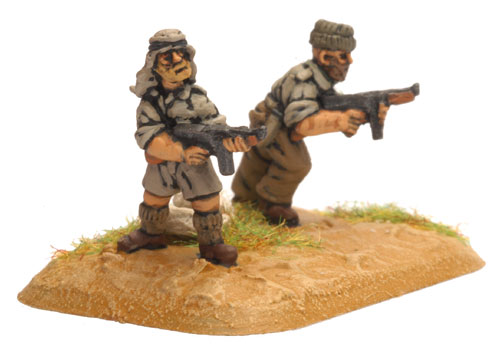
|
He turned his thoughts towards vehicle-mounted operations. It soon dawned on him the potential of the jeep for carrying out his deep penetration raids. Jeeps were obtained through the British Army from the Lend-Lease Scheme. They were then modified for SAS use.
|
The Jeep mounted SAS’s first successful raid followed on 17th November 1941.
Two groups destroyed 61 aircraft at two airfields. Another raid was launched soon after; another twenty seven aircraft were destroyed. By July 1942 the regiment had 15 specially modified jeeps in action in North Africa.
The jeeps were stripped of all non-essential parts.
|
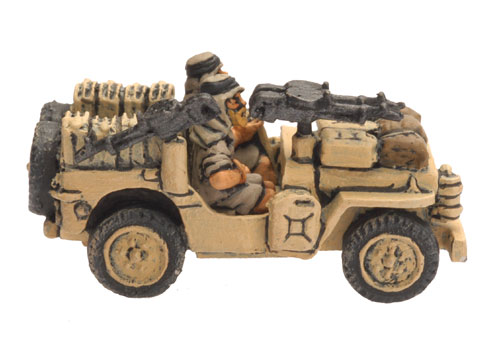 |
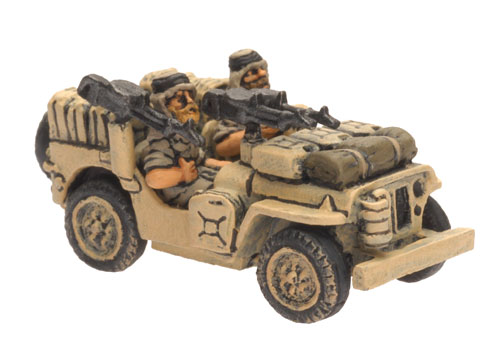 |
The windscreen, most of the radiator grille bars and on occasion the front bumper were removed to lighten the Jeep and increase its load carrying capability. A large amount of fuel and water needed for fast long-range raids could be carried avoiding the need for slower support vehicles. The small barrel to the left of the radiator grill is a water-condensing unit; this reduced the loss of water from the radiator, which would otherwise have had to be topped up from the limited drinking water.
The jeeps also carried sand mats, metal wheel channels, radio equipment and large amounts of ammunition.
|
Heavy armament was the key to the SAS Jeeps success. Each Jeep had a combination of Browning and/or Vickers K machine guns. The Vickers K guns were ex-aircraft weapons and were sometimes mounted in pairs and up to a total of five machine guns could be carried on some Jeeps. These weapons fires a mix of standard, armour-piercing and tracer rounds, creating a tremendously destructive hail of fire demonstrated in one raid where 12 aircraft were destroyed in five minutes.
By November 1942 over 400 aircraft had been destroyed on the ground by SAS raids in Jeeps.
Stirling himself was finally captured in 1943, but escaped four times before being sent to Colditz where he spent the rest of the war.
|
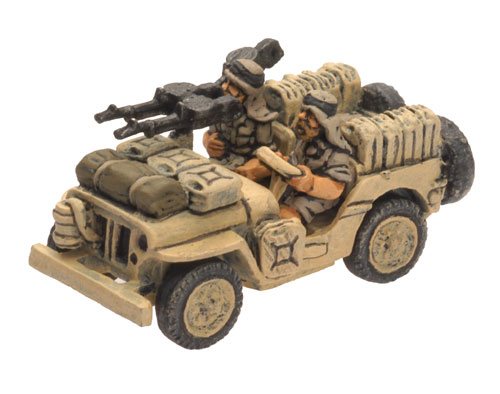
|
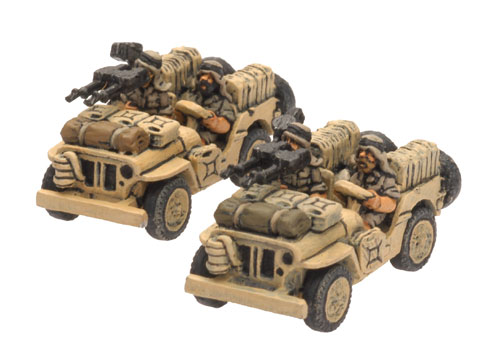 |
The SAS continued their raiding as the front moved from Africa to Italy and then on into Northwest Europe. By late 1944 the SAS were operating behind German lines in Europe. Further modifications to the jeeps included the use of armour plate with bulletproof glass screens at the front and a wire cutter fitted to the front bumper of some vehicles.
By the end of the war SAS in Europe inflicted 7,733 German casualties, 4,784 prisoners were captured and 700 vehicles were either destroyed or captured. 164 railways were cut, seven trains were destroyed and a further thirty-three derailed.
|
|
The BR757 SAS Patrol (x2) contains enough miniatures to make two SAS Patrols. BR412 contains two Jeeps with machine-guns.
Designed by Evan Allen
Painted by Wayne Turner
|
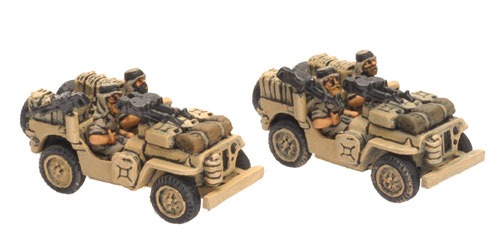
|
Last Updated On Thursday, August 13, 2009 by Blake at Battlefront
|
|
|